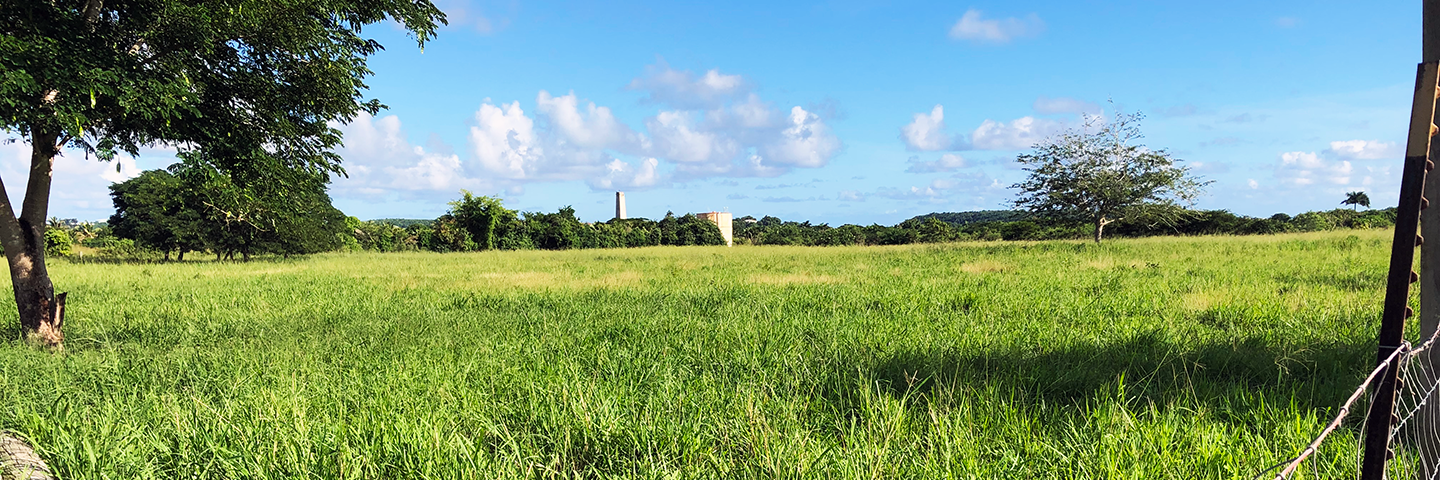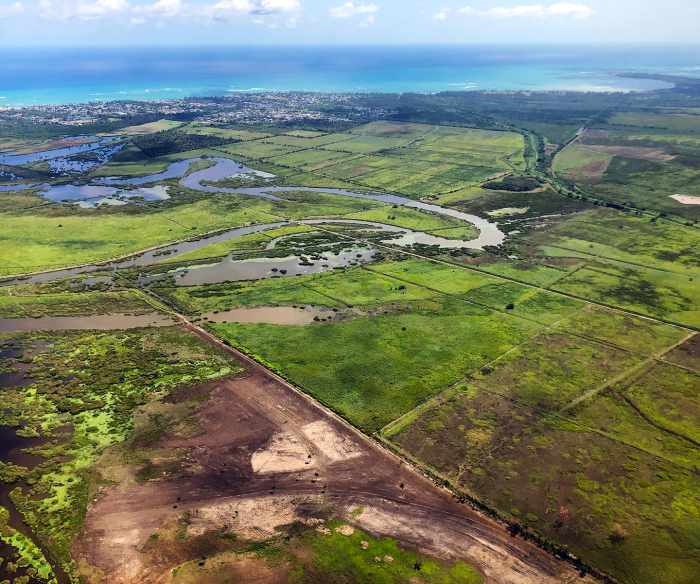Applications and Forms
If you’re interested in applying for NRCS conservation programs, contact your local NRCS office. To apply, you’ll have to complete an application as well as have other forms on file.

The Agricultural Conservation Easement Program (ACEP) helps landowners, land trusts, and other entities protect, restore, and enhance wetlands or protect working farms and ranches through conservation easements.
NRCS is streamlining its Agricultural Conservation Easement Program to improve the program for landowners and partners. Learn more about these changes.
The Agricultural Conservation Easement Program (ACEP) protects the agricultural viability and related conservation values of eligible land by limiting nonagricultural uses which negatively affect agricultural uses and conservation values, protect grazing uses and related conservation values by restoring or conserving eligible grazing land, and protecting and restoring and enhancing wetlands on eligible land.
ACEP has two components:
Additionally, through ACEP, USDA offers the Wetland Reserve Enhancement Partnership (WREP), a voluntary program through which NRCS enters into agreements with eligible partners to leverage resources to carry out high priority wetland protection, restoration, and enhancement and to improve wildlife habitat.
The Inflation Reduction Act included $1.4 billion in additional funding for ACEP over five years and it revised ACEP authority, providing Inflation Reduction Act funding for easements that will most reduce, capture, avoid or sequester greenhouse gas emissions, and extending regular program funding through fiscal year 2031. NRCS is streamlining ACEP, to ensure that the program is easier and more convenient to utilize, and to strengthen implementation of the Inflation Reduction Act. Specifically, NRCS is streamlining ACEP appraisals, land surveys, and certifying eligible entities who help NRCS and producers enroll land into agricultural land easements. In addition, NRCS is expanding the national priority areas eligible for Inflation Reduction Act funding for ACEP easements. For more information, see our fact sheet, ACEP and the Inflation Reduction Act.
On March 13, 2024, NRCS announced it will invest about $138 million of financial assistance from the Inflation Reduction Act in 138 new climate-smart conservation easements, through which farmers and ranchers are conserving wetlands, grasslands and prime farmlands.
Below is the FY2024 Agricultural Conservation Easements Program-Wetland Reserve Easements (ACEP-WRE) ranking criteria and questions for NRCS programs in the Caribbean Area:
ACEP-WRE FY 2024 Ranking Criteria for Caribbean Area
El Programa de Servidumbre para la Conservación Agrícola (ACEP por sus siglas en inglés) proporciona asistencia financiera y técnica para ayudar a conservar las tierras agrícolas, pastizales y/o humedales y sus beneficios relacionados. Bajo el componente de Servidumbre de Conservación de Tierras Agrícolas (ALE), NRCS ayuda a las tribus indígenas, los gobiernos estatales y locales y las organizaciones no gubernamentales a proteger las tierras agrícolas en funcionamiento y limitar los usos no agrícolas de la tierra. Bajo el componente de Servidumbre de Conservación para la Reserva de Humedales, NRCS ayuda a restaurar, proteger y mejorar los humedales inscritos.
NRCS exhorta a los propietarios y grupos con el interés de proteger humedales críticos, tierras agrícolas y pastizales a considerar inscribir sus propiedades en servidumbres de conservación. NRCS invierte en asistencia técnica y financiera a través de ACEP para ayudar a propietarios privados de tierras, tribus indígenas, fideicomisos de tierras y otros grupos en todo el país para proteger estas valiosas tierras.
ACEP brinda asistencia a los propietarios de tierras y entidades elegibles que ayudan a conservar, restaurar y proteger humedales y tierras agrícolas y pastizales productivas. NRCS acepta solicitudes de ACEP durante todo el año, pero las solicitudes se clasifican y financian por períodos de inscripción.
A través de Servidumbres para la Conservación de Tierras Agrícolas de ACEP, NRCS proporciona fondos a las entidades elegibles para la compra de servidumbres en tierras privadas de trabajo. Este programa ayuda a mantener funcionando las tierras de trabajo, especialmente en áreas que experimentan presión de desarrollo. Las entidades cooperativas elegibles incluyen agencias estatales o locales, organizaciones sin fines de lucro y tribus indígenas. Como parte del programa, los propietarios de tierras continúan siendo dueños de sus tierras, pero voluntariamente firman un acuerdo legal con una entidad cooperante para adquirir una servidumbre. La entidad cooperante solicita fondos equivalentes a NRCS para la adquisición de esta servidumbre de su propietario, protegiendo permanentemente su uso agrícola y sus valores de conservación. Los propietarios de tierras no solicitan directamente a NRCS la financiación de Servidumbres de Tierras Agrícolas de ACEP.
Las servidumbres son permanentes. Las tierras elegibles incluyen tierras agrícolas, pastizales, y tierras forestales.

A través de las Servidumbres de Conservación para la Reserva de Humedales de ACEP, NRCS ayuda a los propietarios de tierras y tribus a restaurar, mejorar y proteger los ecosistemas de humedales. NRCS y el propietario trabajan juntos para desarrollar un plan para la restauración y mantenimiento de la servidumbre. Las servidumbres de conservación de humedales pueden ser permanentes, por 30 años, o el máximo permitido por la ley estatal. Los propietarios tribales tienen la opción adicional de inscribirse en contratos de restauración de 30 años sin servidumbre.
Las tierras elegibles incluyen:
Los Servidumbres de Conservación para la Reserva de Humedales proporcionan hábitat para peces y vida silvestre, incluidas especies amenazadas y en peligro de extinción, mejoran la calidad del agua al filtrar sedimentos y productos químicos, reducen las inundaciones, recargan las aguas subterráneas, protegen la diversidad biológica y brindan oportunidades para actividades educativas, científicas y recreativas limitadas.
Contact your local service center to start your application.
Do you farm or ranch and want to make improvements to the land that you own or lease?
Natural Resources Conservation Service offers technical and financial assistance to help farmers, ranchers and forest landowners.

To get started with NRCS, we recommend you stop by your local NRCS field office. We’ll discuss your vision for your land.
NRCS provides landowners with free technical assistance, or advice, for their land. Common technical assistance includes: resource assessment, practice design and resource monitoring. Your conservation planner will help you determine if financial assistance is right for you.
We’ll walk you through the application process. To get started on applying for financial assistance, we’ll work with you:
Once complete, we’ll work with you on the application, or CPA 1200.
Applications for most programs are accepted on a continuous basis, but they’re considered for funding in different ranking periods. Be sure to ask your local NRCS district conservationist about the deadline for the ranking period to ensure you turn in your application in time.
As part of the application process, we’ll check to see if you are eligible. To do this, you’ll need to bring:
If you don’t have a farm number, you can get one from USDA’s Farm Service Agency. Typically, the local FSA office is located in the same building as the local NRCS office. You only need a farm number if you’re interested in financial assistance.
NRCS will take a look at the applications and rank them according to local resource concerns, the amount of conservation benefits the work will provide and the needs of applicants. View Application Ranking Dates by State.
If you’re selected, you can choose whether to sign the contract for the work to be done.
Once you sign the contract, you’ll be provided standards and specifications for completing the practice or practices, and then you will have a specified amount of time to implement. Once the work is implemented and inspected, you’ll be paid the rate of compensation for the work if it meets NRCS standards and specifications.